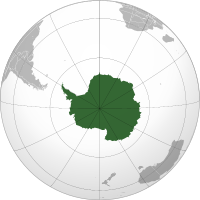
Photo from wikipedia
This study presents an analysis of extreme temperature events over southeastern USA from 1978 to 2017. This region is part of the so-called ‘warming hole’ where long-term surface temperature trends… Click to show full abstract
This study presents an analysis of extreme temperature events over southeastern USA from 1978 to 2017. This region is part of the so-called ‘warming hole’ where long-term surface temperature trends are negative or non-significant, in contrast with the remainder of the country. This study examines whether this distinctive characteristic reflects on the region’s trends in temperature extremes. Daily maximum and minimum temperatures from the US Historical Climatology Network were used to compute extreme indices recommended by the Expert Team on Climate Change Detection and Indices. Temperature extreme indices computed for all stations using the RClimDex package were gridded onto a regular latitude–longitude grid, and a spatiotemporal analysis of associated trends was performed. The results point to a tendency toward warming due to increasing trends in the annual occurrence of the hottest day, the warmest night, warm days, warm nights, summer days, tropical nights, and warm spells, as well as decreases in cool nights, cool days, and frost days. Statistically significant trend changes over large portions of the Southeast were dominated by increases in the frequency of the coldest night, summer days, and warm nights, and decreases in cool nights and frost days. Comparison of our results with other global and regional studies indicate that most of the extreme temperature changes over the Southeast are consistent with findings from other parts of the United States (US) and the world. Overall, this study shows that being part of the ‘warming hole’ does not preclude southeastern US from an intensification of temperature extremes, whether it is an increase in warm extremes or a decrease in cold ones. Further, the results suggest that, should the current trends continue in the long term, the Southeast will not be considered as being part of a warming hole anymore.
Journal Title: Climate
Year Published: 2021
Link to full text (if available)
Share on Social Media: Sign Up to like & get
recommendations!